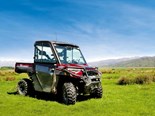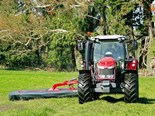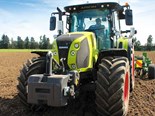Test: Challenger MT740
The arrival of the new Challenger MT700 Series in NZ has been hotly anticipated. Farm Trader was thrilled to check out the middle child of the MT line-up, the MT740.
Hooking the 405hp Challenger up to a 14-yard scoop for some earthworks on the outskirts of Morrinsville made for an interesting start to the day. More used to driving tractors and farm implements, this was a definite change of pace.
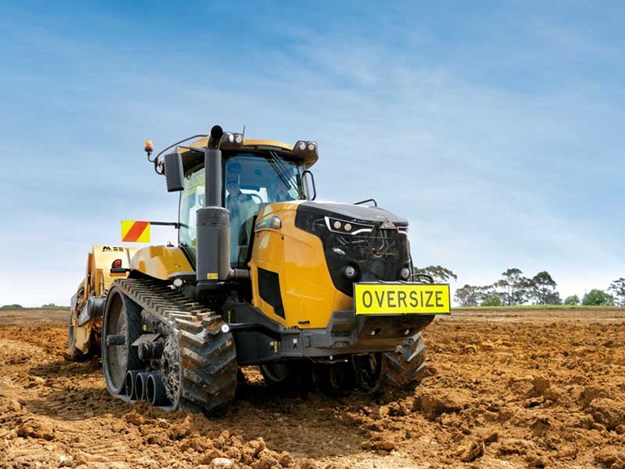
Having never driven this particular tractor or a scoop of this size, I found the Challenger surprisingly quick, even pulling a fully laden load.
Working alongside a 180hp Cat bulldozer pulling an older scoop, it was interesting to observe the traditional Cat workhorse in action alongside the highly spec’d Challenger. I know which one I’d rather sit inside all day.
Even the dozer driver, an 82-year-old operator who has been doing this kind of work all his life was impressed with the Challenger’s power and speed and the self-cleaning properties of the rubber tracks over the 700mm grousers on the dozer (not my operating).
 |
|
AGCO’s Chris Bain and Farm Trader’s Jaiden Drought dwarfed by the mighty Challenger
|
Not only has the Challenger 700 Series got a classy new look with similar styling to the Fendt 1000 Series we recently tested, there are also similarities in the crux of the machine.
Unlike the Fendt 1050 where we couldn’t find a machine big enough at that time of year to slow it down, connecting the Challenger up to a scoop this size (which certainly has the ability to put a machine on its knees), meant we could thoroughly test the power and traction ability in a real work situation.
 |
|
The new styling makes the Challenger stand out from the crowd
|
A main drawcard of the Challenger 700 Series is the Fendt Vario transmission attached to the new AGCO power seven-cylinder engine.
Sure-footed on a smooth and well-balanced suspension system, this has transformed what could be described as quite a rough machine traditionally into an extremely pleasant place to spend the day, alongside the associated group and soil protection characteristics that come with a tracked machine.
Engine and cooling
 |
|
A sophisticated CAS sees the fan suck cold air through rather than dragging hot air away from the radiator
|
The Tier 3B seven-cylinder AGCO power engine has several key features. Starting from the front, the CAS or concentric air system is a sophisticated design where the fan is located in front of the cooler unit, sucking cold air through rather than dragging hot air away from the radiator.
Hydrostatically driven, there are no belts, etc. to worry about, which allows it to run independently of engine speed, reducing fuel consumption. Why seven cylinders and not the more traditional even number?
AGCO have opted for this as part of its high-torque, low-speed concept, with 1400-foot pounds of torque at just 1275rpm – ideal for much of the work this machine will be doing.
Testing it with the scoop behind was a perfect way to see this concept in action. With the rpm sitting at 1400, it almost didn’t move during the whole scooping cycle. Coupled with the smart transmission and engine through TMS, the two work perfectly together, with the tracks biting into the tacky clay, filling and unloading the scoop in no time.
The 740 is the middle model in the MT 700 Series. The MT 738 is the little brother and the big daddy is the MT743. All have the 9.8-litre Tier 3B engine with AdBlue. Maximum power of the 740 is 405hp. Even though not compulsory, these tractors run AdBlue as well as diesel, with close enough to a 1000-litre diesel tank capacity and 70-litre of AdBlue.
The stepless transmission
 |
|
The MT 700 Series combines the versatility of a track machine with the comfort |
The ACCU-VT stepless transmission (Fendt) is the TA 300. Rated to 300kW of engine power, it has a maximum speed of 40km an hour at an economical 1550rpm.
The transmission is as smooth as many have come to appreciate from the Fendt system. Current Fendt operators will feel right at home in the Challenger cab, which functionality-wise can be driven in either foot or stick mode, with the luxury of TMS.
My only gripe with the machine is the in-cab control of the transmission. You cannot have the Profi joystick as an option; instead, you have to put up with the lower spec’d ‘power’ joystick. This is fine; it just doesn’t have the high level of functionality of the Profi, something I was told I need to get over, and I think you probably would, given time.
Tracks and suspension
 |
|
Track width options vary from 16 to 34 inch
|
The variable bar axle with smooth hard bar allows the tracks to be easily adjusted from row crop up to three metres. Track width options go from 16 to 34 inch with general ag, extreme ag, or extreme application tracks available.
The suspension system transforms this machine and is a simple concept. Firstly, two large coil springs give the hard bar oscillation of nearly 18cm upwards and 8cm downwards. This allows for 11 degrees, plus or minus, isolation.
Additionally, the left and right track move independently of each other and the chassis, allowing the tractor to stay in contact with the ground.
The next ride comfort system is really what sets this machine apart. Challenger has always had the Mobil-Trac system, however, this has been made even better with a long wheelbase and triple pivoting bogie wheels on the base of the tracks, giving even better traction and ride comfort.
Another feature increasing operator comfort is the two-point cab suspension. Sprung from the rear, this gives 100mm of travel and makes for a smooth ride. The combination of these features sees me go so far as to say that this Challenger MT740 is more comfortable than a suspended wheel tractor in the same environment. For a 19-tonne tracked machine, that’s quite some statement.
Hydraulics, linkage, and PTO
 |
|
Up to six spools to keep even the most demanding implement under control
|
The hydraulics required to run a machine of this size require plenty of oil. Two 220-litre pumps can be spec’d, making a combined total of 440 litres per minute available, which is enough to knock the socks off almost anything.
Up to six spools should keep even the most demanding implement under control. The two-pump system works well, as the total available volume isn’t pumped all the time (to the detriment of fuel efficiency). It’s simply on demand when needed. The minimum amount of oil is pumped for maximum productivity while having plenty of grunt if demand ramps up.
This also gives flexibility as some machines require different levels of oil demand. For example, high pressure but low volume, or high volume but low pressure. The dual pump system compensates for this. The linkage and PTO are both optional.
The Cat 4 linkage with an 8.6-tonne capacity and 1000/1000E PTO round out the rear end.
Cab and controls
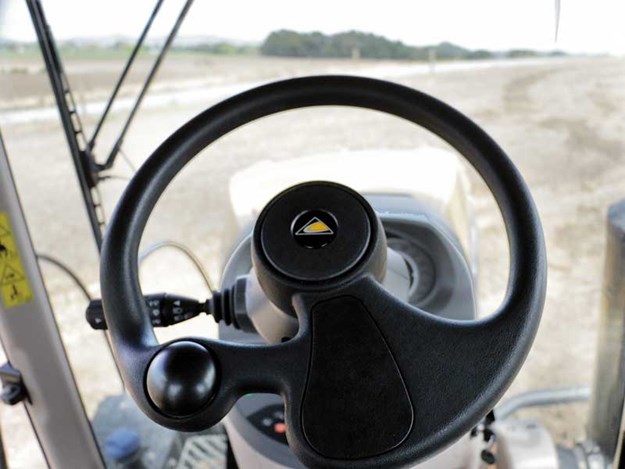 |
|
The noticeably different shaped steering wheel; radio controls can be integrated
|
The operating environment is quintessential of many of these large tractors for broad acre/long working hour days. Inside the spacious four-pillar cab and large glass area, Fendt operators will feel right at home with the right-hand console and dash becoming a familiar sight across a number of the ACGO products for streamlined familiarity.
The notable exception is the funny-shaped steering wheel. Like most tracked machines, it’s more sensitive than on a wheeled tractor.
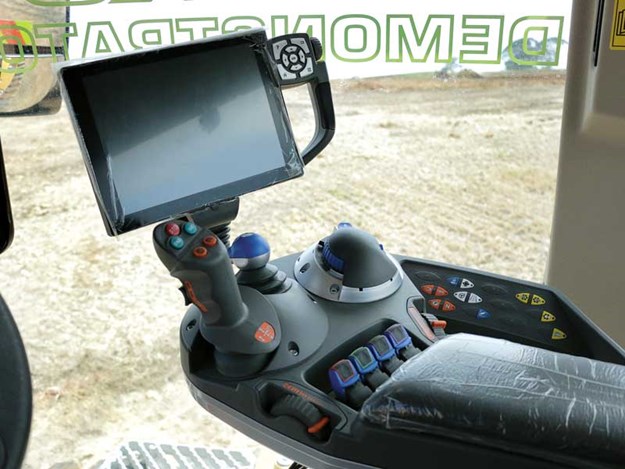 |
|
Existing Fendt operators will feel right at home
|
However, this sensitivity gets lower as the speed increases, so swatting a fly from your face doesn’t result in you almost doing a 360-degree turn. Not only is the steering wheel ‘oddly shaped’, it also has the option of radio controls on the steering wheel so you can keep on with the task ahead while doing a bit of channel surfing.
The comfy plush seat is ideal for long days behind the wheel. The touchscreen terminal allows all machine functions to be adjusted to suit individual operators. It also doubles as the GPS monitor and can be used as part of the four split screen display coupled with ISOBUS and two camera connection capability.
 |
|
Good rear visibility from the cab for jobs such as scooping
|
The all-round visibility is good. You can see the front of the tracks from inside the cab. On the left (the only entry side) are automatically folding steps so they don’t get wiped off (or you need to carry a small step ladder like old mate in the dozer), while on the right, a nudge bar protects the front of the right-hand track.
 |
|
The large roomy cab is a pleasure to be in; ideal for those big jobs
|
LED lights under the rear of the cab, along with full LED lighting options will see you burning the candle from both ends – that’s if you can keep up with the ferocious appetite for work these Challengers have.
Verdict
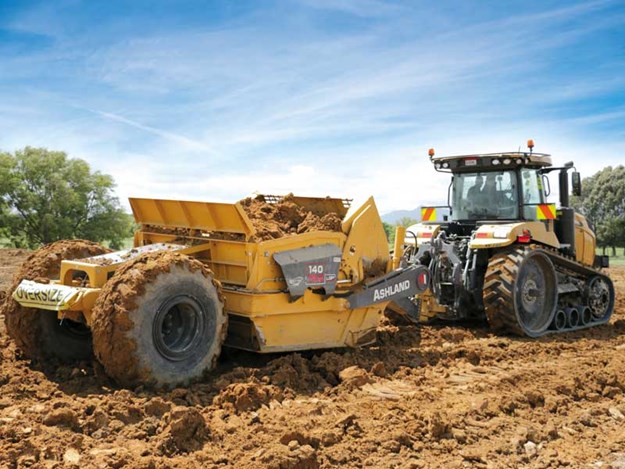 |
|
The self-cleaning tracks were impressive in the tacky clay
|
Not only do they look staunch in the classic Challenger livery, but operator comfort is also a step up from what has traditionally been a rough riding option with little concern for the operator’s spine.
The MT 700 Series combines the versatility of a track machine with the comfort of a wheeled tractor, thanks to the various suspension capabilities and new Maxx Ride track system. This coupled with the high torque, low revving engine, and the high functionality of the CVT transmission makes this machine almost too good to overlook.
Challenger MT740 specifications
| Engine | AGCO Power 9.8L Tier 3B 7-cylinder diesel engine |
| Transmission | Accu-VT Stepless/TA 300T |
| Max torque | 1806Nm |
| Max speed | 40km/hr |
| Diesel tank capacity | 681L in base, auxillary tank options 814L or 257L |
| Hardbar oscillation | ±11 degrees |
| Unladen weight | 15,169kg standard gauge/ 15,271kg wide gauge |
Pluses
- Surprisingly smooth ride for a tracked machine
- Large comfortable cab environment
- Highly functional transmission
- Low rev, high torque engine concept
- CAS cooling that’s more efficient than traditional systems
- Folding steps make entry and exit a doddle
- Massive 440L/min oil flow
Minuses
- No option for the Profi joystick, which would have made a task like scooping easier, with two hydraulic spool controls on the joystick along with transmission functionality
Video: Challenger MT740
Watch the Challenger MT740 tractor in action.
Keep up to date in the industry by signing up to Farm Trader's free newsletter or liking us on Facebook

.JPG)










